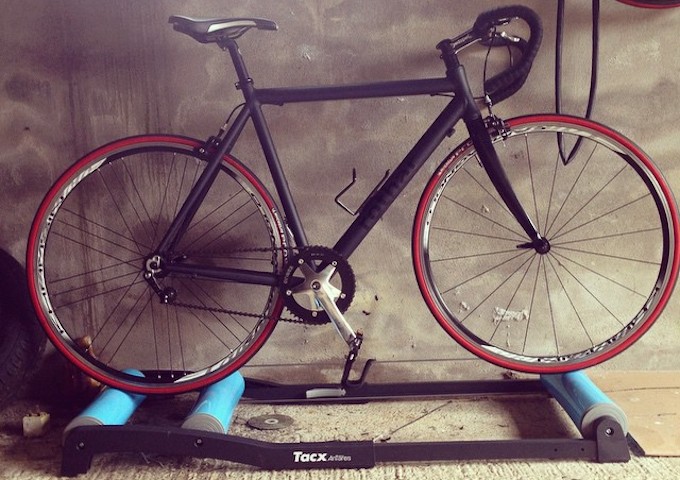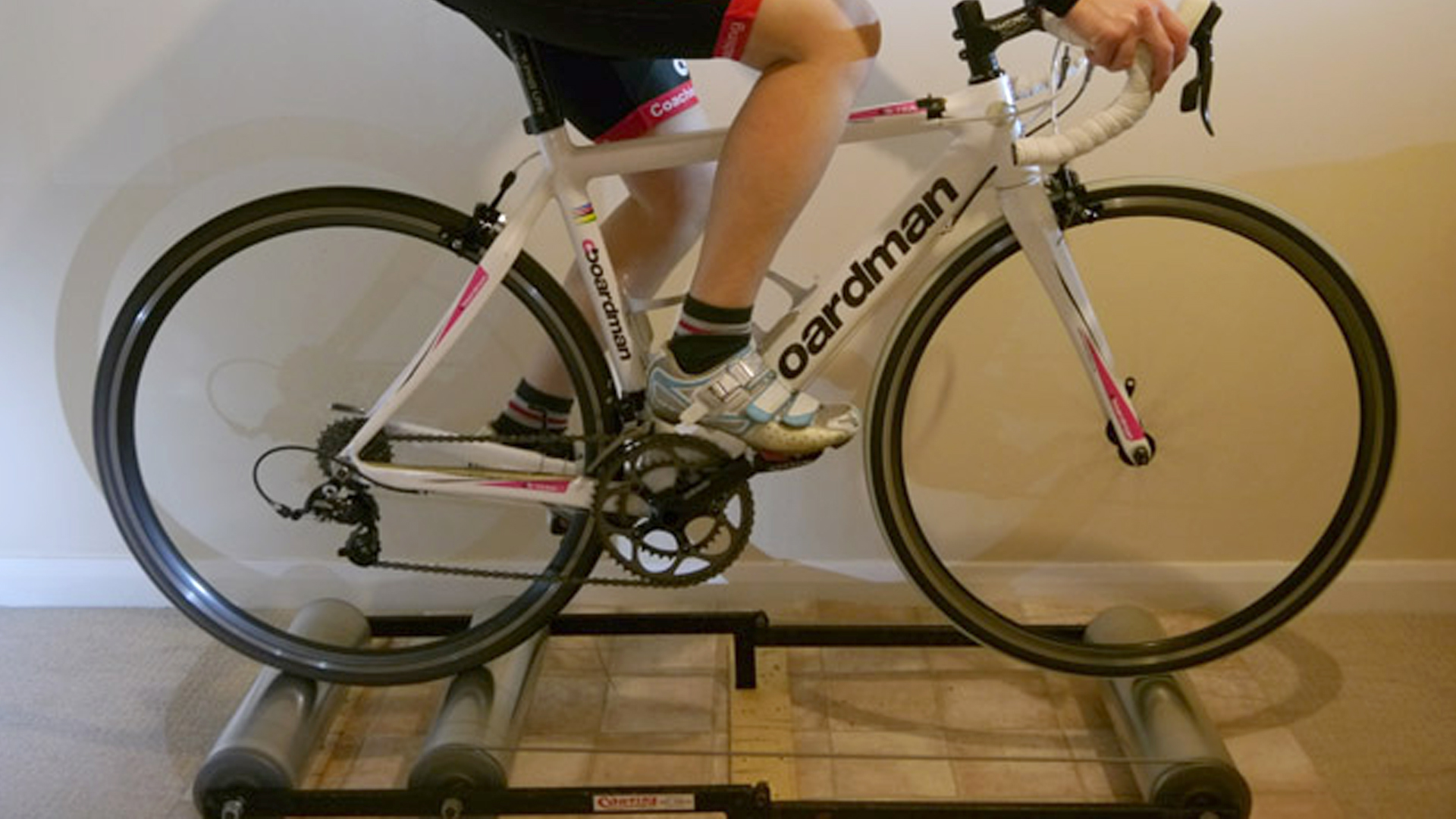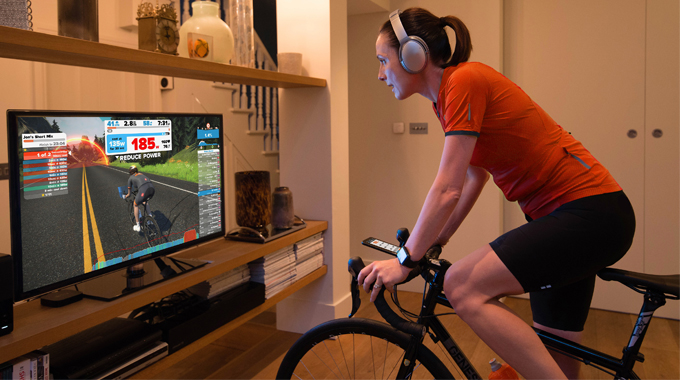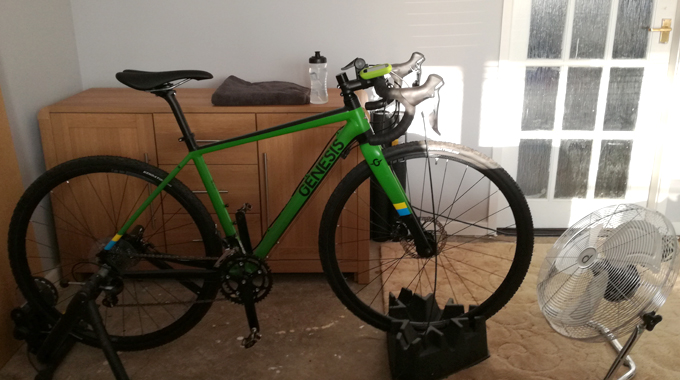The best way of training for time on the bike is to – shocker – spend lots of time on your bike. And that’s why turbo trainers and rollers have the edge on a spin bike during the off-season.
By letting you train on your actual steed, these machines ensure you are prepared for whatever crazy damn thing you’re planning on subjecting yourself to the minute the sun peeks out.
But unless you magically came across an indoor trainer in the skip next to your house, you’ll probably be wondering whether rollers or turbo trainers offer the best by way of training and practicality. So we’ve bunched the pros and cons of each into helpful categories so you can make an informed decision.
The Learning Curve

Turbo trainers work by applying resistance to your back wheel while it’s fixed to the turbo trainer frame. It’s just like your pedalling your bike, but you’re stuck to the ground and watching Mock the Week. This means you can go straight from newbie to power-user in a matter of minutes.
12 Rookie mistakes to avoid on the turbo trainer
Rollers present a steeper curve. They have a much greater requirement that the user has a sense of balance and the ability to concentrate for extended periods: you’re cycling on spinning rollers without the bike being held static and therefore you must continuously pay attention to staying upright. It’s likely that your balance is already half decent due to the fact you’re a cyclist, but rollers are an acquired talent… despite the fact they mimic being on the road better than a turbo trainer, the process still has a rather alien, uncanny feel. When you nail it, however, many would argue the rewards are greater.











